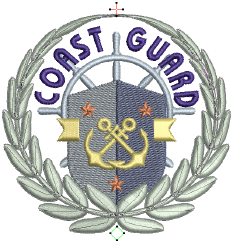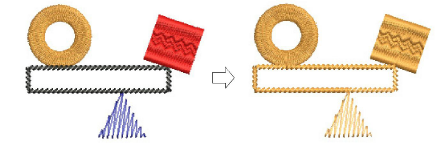
La característica Ramificación le permite digitalizar objetos parecidos – p.ej., los dedos de una mano, secciones de una letra personalizada – sin tener que pensar en la secuencia de bordado y uniones de mayor eficacia. Apliqué Ramificación para unir los objetos seleccionados en un solo ‘objeto ramificado’.

3Los objetos se vuelven a secuenciar, los conectores se minimizan, se agrupan los objetos componentes y se regeneran las puntadas.
3Cuando se seleccionan objetos disimilares, los objetos que no pueden ramificarse quedan omitidos.
3Todos los objetos componentes se agrupan y se pueden seleccionar como uno individual.
3Los objetos ramificados se pueden remodelar.
3Hay únicamente un punto de entrada y uno de salida, pero todos los objetos componentes tienen puntos individuales de reforma.
3Los objetos ramificados conservan sus propiedades originales al tiempo que comparten el color del primer objeto en la secuencia.

3La Ramificación funciona con cualquier combinación de los siguientes tipos de objetos – Corrido, Columna A, Columna B, Columna C, Relleno complejo y Giro complejo. Objetos con Corrido de motivos y Relleno de motivos no pueden ser utilizados.
3Se pueden volver a asignar las tipos de puntada a través de la barra de herramientas.
3Aplicar ramificación automático